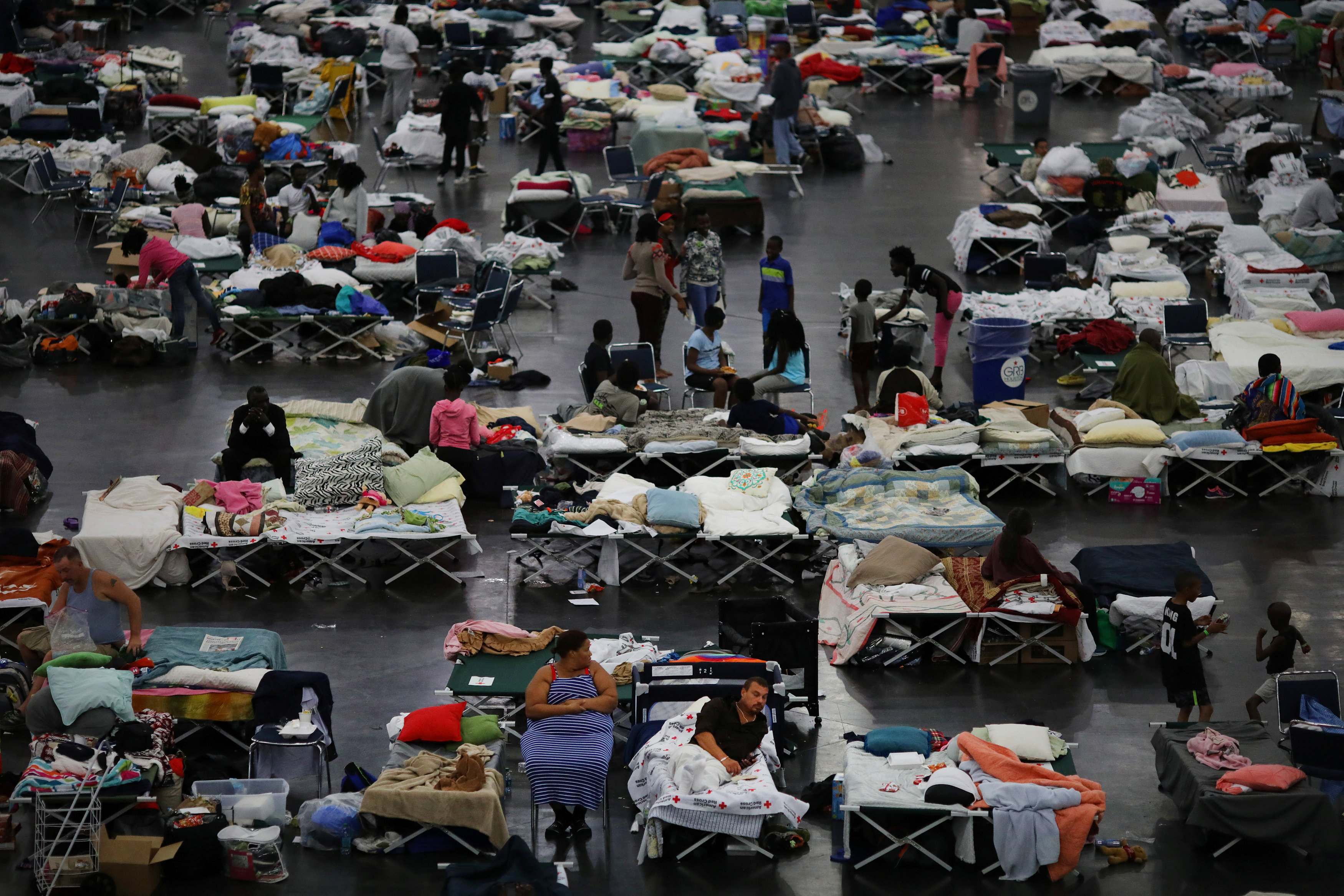
By Ruthy Munoz and Gary McWilliams
HOUSTON (Reuters) – Tropical Storm Harvey bore down on Louisiana on Wednesday, pouring down more water after setting rainfall records in Texas that caused catastrophic flooding and paralyzed the U.S. energy hub of Houston.
The storm that first came ashore on Friday as the most powerful hurricane to hit Texas in more than 50 years has killed at least 17 people and forced tens of thousands to leave their deluged homes.
Damage has been estimated at tens of billions of dollars, making it one of the costliest U.S. natural disasters.
There is some relief in sight for Houston, the fourth most populous U.S. city, with forecasters saying five days of torrential rain may come to an end as the storm picks up speed and leaves the Gulf of Mexico region later in the day.
Harvey made landfall early Wednesday and was about 32 miles (52 km) south of Lake Charles, Louisiana. It was expected to bring an additional 3 to 6 inches (7.5 to 15.24 cms) of rain to an area about 80 miles east of Houston as well as southwestern Louisiana, where some areas have already seen more than 18 inches of rain.
Several hundred people had already been rescued from their homes in Lake Charles, Louisiana, where floodwaters were knee-deep in places, Mayor Nic Hunter told CNN.
“We are a very resilient people down here. We will survive. We will take care of each other down here in Texas and Louisiana,” Hunter said. “But we do need some help from the federal government, these homeowners and these people who have been displaced. That’s going to be our biggest need.”
Harvey is projected to weaken as it moves inland to the northeast, the National Hurricane Center said.
“We aren’t going to be dealing with it for too much longer. It’s going to pick up the pace and get out of here,” said Donald Jones, a meteorologist at the National Weather Service in Lake Charles.
But nearly a third of Harris County, home to Houston, was under water, an area 15 times the size of Manhattan, according to the Houston Chronicle newspaper. It may take days for all flood waters, which have spilled over dams and pushed levees to their limits, to recede, local officials said.
City officials were preparing to temporarily house some 19,000 people, with thousands more expected to flee. As of Wednesday morning, state officials said close to 49,000 homes had suffered flood damage, with more than 1,000 destroyed.
Houston Mayor Sylvester Turner imposed a curfew from 12 a.m. to 5 a.m. amid reports of looting, armed robberies and people impersonating police officers.
U.S. President Donald Trump visited Texas on Tuesday to survey damage from the first major natural disaster to test his crisis leadership. The president said he was pleased with the response, but too soon for a victory lap.
“We won’t say congratulations,” he said. “We don’t want to do that … We’ll congratulate each other when it’s all finished.”
Moody’s Analytics is estimating the economic cost from Harvey for southeast Texas at $51 billion to $75 billion.
The storm has affected nearly one-fifth of U.S. refining capacity, sparking concerns about gasoline supply. The national average gasoline price rose to $2.404 a gallon, up six cents from a week ago, with higher spikes in Texas.
The unprecedented flooding has left scores of neighborhoods in chest-deep water and badly strained the dams and drainage systems that protect the low-lying Houston metropolitan area whose economy is about as large as Argentina’s.
The National Weather Service has issued flood watches and warnings that stretch from the Houston area into Tennessee.

President Donald Trump and first lady Melania Trump receive a briefing on Tropical Storm Harvey relief efforts in Corpus Christi, Texas. REUTERS/Carlos Barria
DIED TRYING TO RESCUE PEOPLE
Harvey has drawn comparisons with Hurricane Katrina, which devastated New Orleans 12 years ago, killing more than 1,800 people and causing an estimated $108 billion in damage.
Among the confirmed fatalities was Houston Police Sergeant Steve Perez, a 34-year veteran of the force who drowned while attempting to drive to work on Sunday.
In Beaumont, northeast of Houston, a woman clutching her baby daughter was swept away in raging flooding. The baby was saved but the mother died, Beaumont police said.
Ruben Jordan, a retired high school football coach died when he was helping rescue people trapped in high water, the Clear Creek Independent School District said.
In all, 17 people have perished, according to government officials and the Houston Chronicle. Four volunteer rescuers also went missing after their boat was swept in a fast-moving current, local media reported.
U.S. Coast Guard helicopters and boats have rescued more than 4,000 people. Thousands of others have been taken to safety by police, rescue workers and citizen volunteers who brought their boats to help, local officials said.
The National Hurricane Center on Tuesday afternoon said a record 51.88 inches (131.78 cm) of rain had fallen in Texas due to Harvey, a record for any storm in the continental United States.
This breaks the previous record of 48 inches set during tropical storm Amelia in 1978 in Medina, Texas, the NHC said. Medina is west of San Antonio. The island of Kauai was hit with 52 inches of rain from tropical cyclone Hiki in 1950, before Hawaii became a U.S. state.
For a graphic on storms in the North Atlantic, click: http://fingfx.thomsonreuters.com/gfx/rngs/STORM-HARVEY/010050K2197/index.html

Ethan holds his 2-year-old daughter Zella as they walk through flood waters from Tropical Storm Harvey in Iowa, Calcasieu Parish, Louisiana, U.S., on August 29, 2017. REUTERS/Jonathan Bachman
(Additional reporting by Gary McWilliams, Ernest Scheyder, Erwin Seba, Ruthy Munoz and Peter Henderson in Houston; Andy Sullivan in Rockport, Texas; Jon Herskovitz in Austin, Brendan O’Brien in Milwaukee; Writing by Scott Malone and Jon Herskovitz; Editing by Toby Chopra and Chizu Nomiyama)











